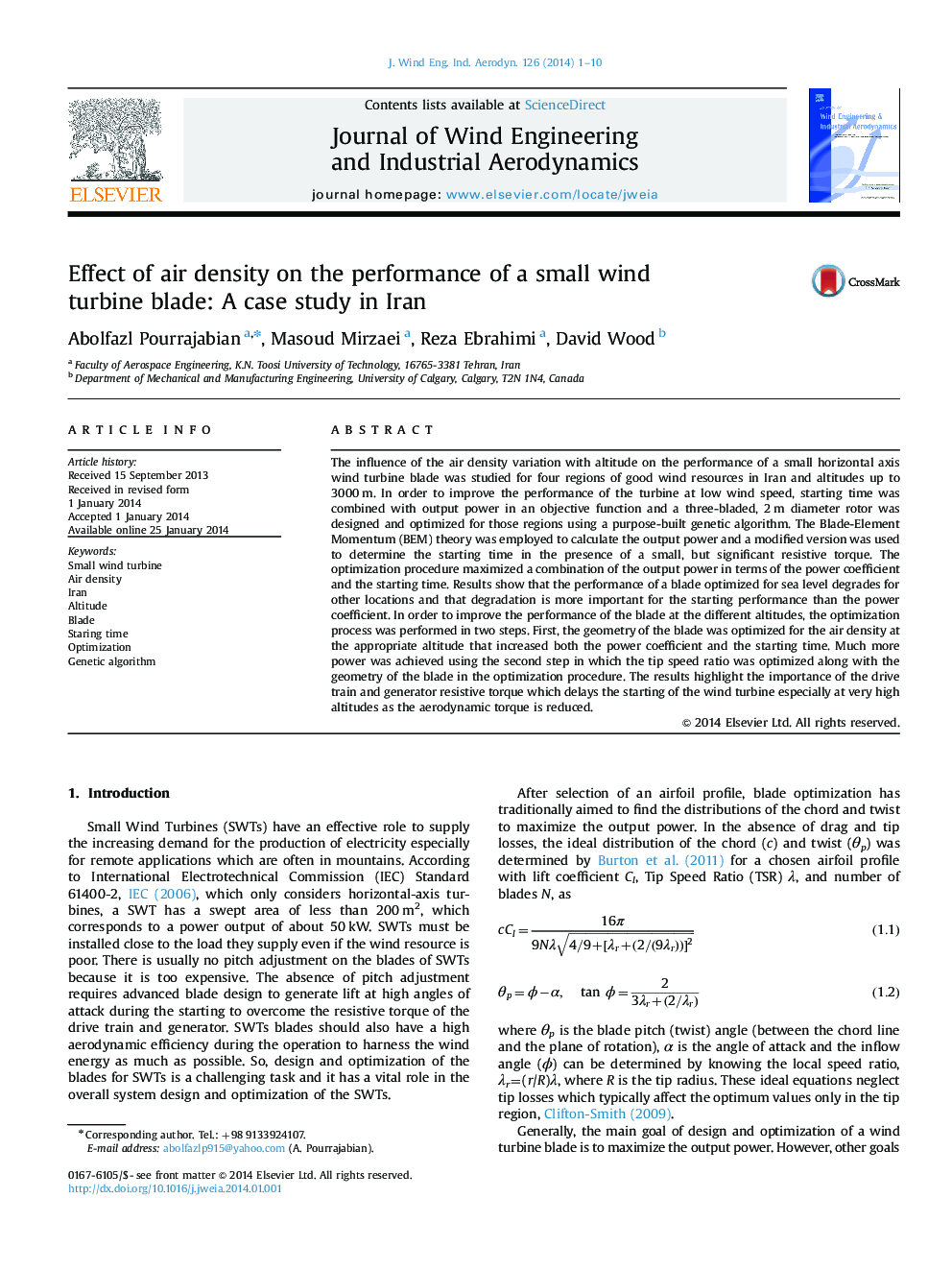| کد مقاله | کد نشریه | سال انتشار | مقاله انگلیسی | نسخه تمام متن |
|---|---|---|---|---|
| 293075 | 511106 | 2014 | 10 صفحه PDF | دانلود رایگان |
• The influence of the altitude on the performance of a small wind turbine blade was studied for altitudes up to 3000 m.
• The starting performance and the power coefficient of a blade optimized for operating at sea level degrades at higher altitudes.
• At very high altitudes, the drive train and generator resistive torque delays the starting of the wind turbine noticeably.
• In some cases, the blade could not start with the same electrical generator working at the sea level.
• By redesigning the blade and changing the generator characteristics, improved performance is achievable for higher altitudes.
The influence of the air density variation with altitude on the performance of a small horizontal axis wind turbine blade was studied for four regions of good wind resources in Iran and altitudes up to 3000 m. In order to improve the performance of the turbine at low wind speed, starting time was combined with output power in an objective function and a three-bladed, 2 m diameter rotor was designed and optimized for those regions using a purpose-built genetic algorithm. The Blade-Element Momentum (BEM) theory was employed to calculate the output power and a modified version was used to determine the starting time in the presence of a small, but significant resistive torque. The optimization procedure maximized a combination of the output power in terms of the power coefficient and the starting time. Results show that the performance of a blade optimized for sea level degrades for other locations and that degradation is more important for the starting performance than the power coefficient. In order to improve the performance of the blade at the different altitudes, the optimization process was performed in two steps. First, the geometry of the blade was optimized for the air density at the appropriate altitude that increased both the power coefficient and the starting time. Much more power was achieved using the second step in which the tip speed ratio was optimized along with the geometry of the blade in the optimization procedure. The results highlight the importance of the drive train and generator resistive torque which delays the starting of the wind turbine especially at very high altitudes as the aerodynamic torque is reduced.
Journal: Journal of Wind Engineering and Industrial Aerodynamics - Volume 126, March 2014, Pages 1–10
